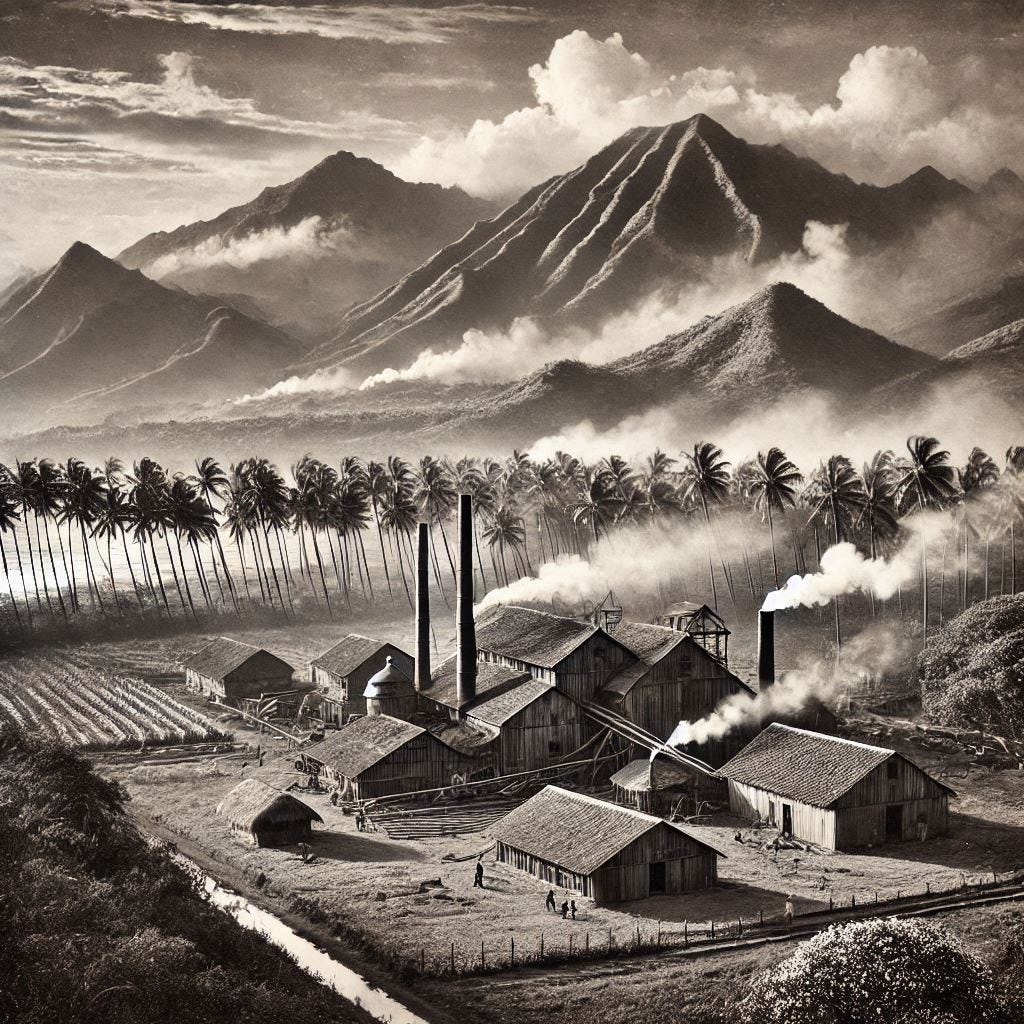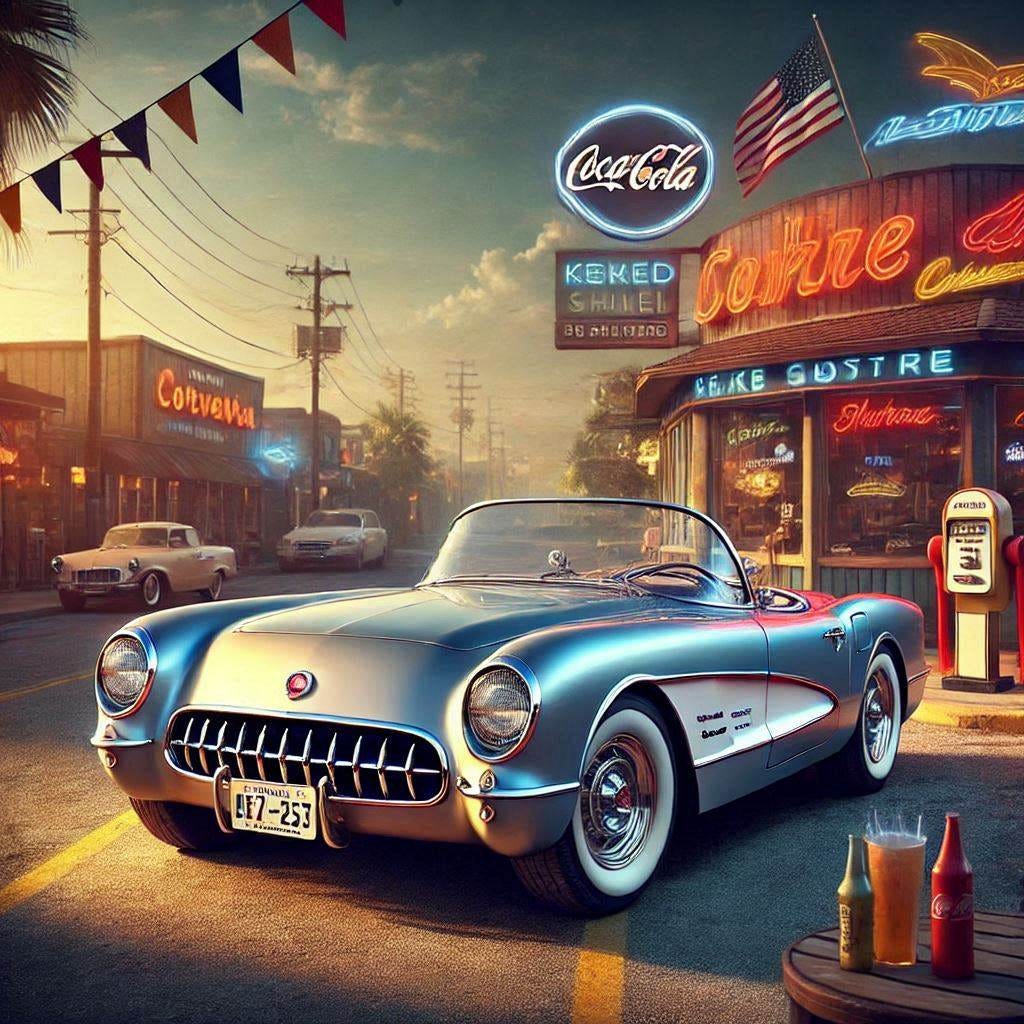The Mysteries of History (January 17 Edition)
Sugar Daddy, Muscle Car, Presidential Warning, U.S. Bombs Spain, and The Big One Hits L.A.
1893 — Hawaii Monarchy Replaced By a Robber Baron
Sanford Dole, of the family now mostly famous for pineapples, and other sugar planters conspired together to overthrow the monarchy in Hawaii on this date in 1893, with Dole inserting himself as the president of the new government.
Questions: How long did it take after this regime change for Hawaii to become an official Territory of the United States (after being annexed two years prior), and what twists and turns and back-and-forths occurred before that happened? When did Hawaii become a State?1953 — Chevy Corvette is Unveiled
A prototype of the Chevy Corvette was debuted on this date in 1953, with a starting price of $3,500.
Questions: Is the Corvette still in production? Has it changed much in appearance and styling over the years? Has it changed much in price over the years? How much is a 1953 Corvette in pristine condition worth today?1961 — Eisenhower Warns of a Dangerous Military-Industrial Complex
Outgoing U.S. President Dwight D. Eisenhower gave one of the most famous speeches by someone in that office on this date in 1961, warning of the dangers of allowing a “military-industrial complex” to exert exaggerated influence over governmental affairs and geopolitical decisions. Perhaps in a related vein, President Biden warned in a speech yesterday (January 16, 2025) of an emerging Oligarchy in the U.S. and the dangers it could pose.
In his farewell address, Eisenhower said, “The potential for the disastrous rise of misplaced power exists and will persist.” He also sagely added, “As we peer into society’s future, we — you and I, and our government — must avoid the impulse to live only for today, plundering, for our own ease and convenience, the precious resources of tomorrow. We cannot mortgage the material assets of our grandchildren without asking the loss also of their political and spiritual heritage.”
Questions: What was Eisenhower most famous for (besides this speech)? Were his fears about a military-industrial complex well-founded? What is an oligarchy?1966 — The U.S. Accidentally Bombs Spain
public domain image from wikimedia commons
Two American military aircraft collided over the coast of Spain on January 17, 1966, and the accident, besides killing all four crewmembers of the smaller (refueling) aircraft, caused three H(Hydrogen)-bombs to fall onto Spain and into the ocean, forming craters and spreading radioactive plutonium near the remote town of Palomares.
Questions: How many residents of Palomares suffered ill effects from the radiation that was released, and what was done for them? How many other incidents involving hydrogen- or nuclear-weapon equipped aircraft have occurred over the decades? When it comes to these kinds of mishaps, what do Georgia (the U.S. State, not the country in East Europe), Washington (the U.S. State, not D.C.) and North Carolina have in common?1994 — “The Big One” Hits L.A.
public domain image from wikimedia commons
Billions of dollars in damage was caused by the 6.7 Northridge earthquake epicentered in a densely populated part of the greater Los Angeles area on this date in 1994. Worse, though, was the loss of 54 lives. The quake struck at 4:31 am, when most people were asleep rather than on the highways, limiting the death toll. For example, a mall collapsed, but nobody was inside it at the time.
Thirty-one years after this quake (right now, ongoing, in 2025), the Los Angeles area is suffering from one of the worst series of fires in U.S. history.
Questions: Which are the most powerful earthquakes to ever hit the U.S.? How about the world? Which have been the most deadly earthquakes to ever hit the U.S. How about the world? Have you heard of the New Madrid (Missouri) earthquakes of 1811 and 1812? When speaking of massive, destructive fires, have you heard of the Peshtigo (Wisconsin) fire of 1871?









